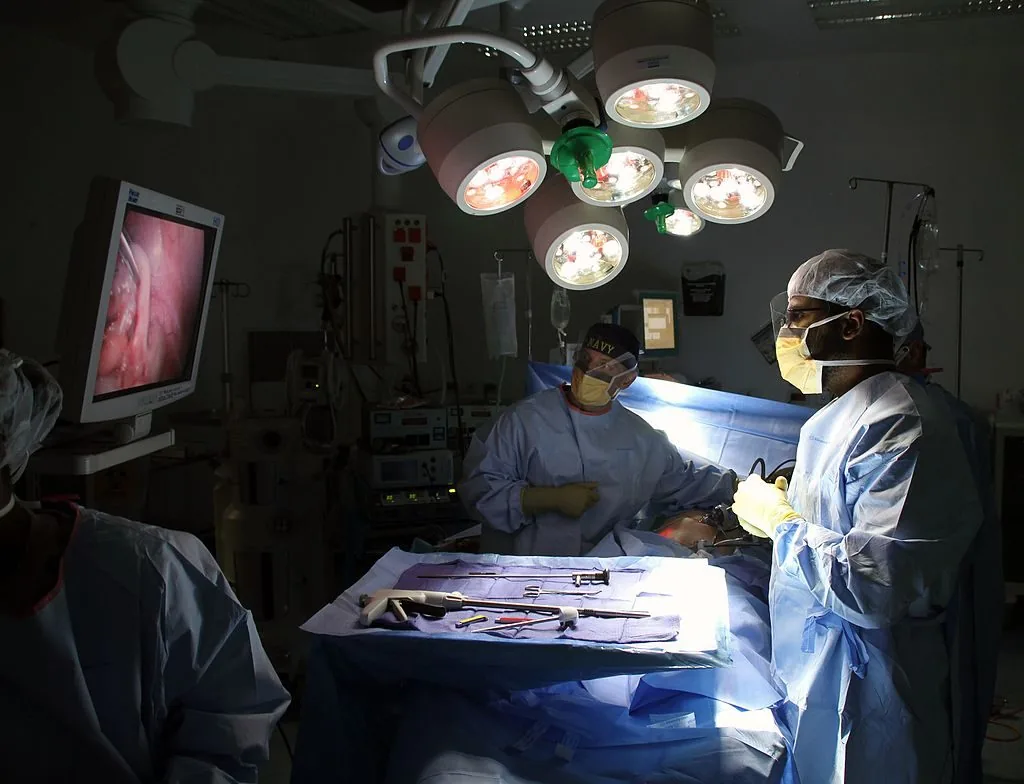Laparoscopic Hysterectomy
One of the most important advances in surgical procedures has been the development of laparoscopic surgery. Many women have had laparoscopic hysterectomies. Instead of making a large incision, laparoscopic procedures use a few small incisions to perform major operations. These smaller incisions mean that patients have significantly smaller scars and improved recovery times; however, the challenge comes when large objects must be removed through these smaller incisions.
Power Morcellators
In order to fit a large organ, such as a uterus, through these small incisions, the organ must be ground up into small pieces and removed through the incision piece by piece. It is difficult to do this with unwieldy laparoscopic tools. Therefore, medical device companies, such as Ethicon, helped to develop a power morcellator. This surgical tool works be grinding up the organ or tumor into smaller pieces that are easily removed through the small laparoscopic scars. Now, gynecologists and obstetricians are able to perform many of their procedures laparoscopically.
The Problem with Power Morcellators
Many of the surgical procedure that OB/GYNs performed using power morcellators included hysterectomies (uterus removals) and fibroid procedures. When this surgical tool grinds up these fibroids, pieces of the fibroids tend to flow throughout the internal abdominal cavity. Because these pieces are spread throughout the cavity, surgeons knew not to use this surgical tool to remove a cancerous tumors; however, the problem arises when the surgeon doesn’t know that the cancer exists.
Late Detection of Female Cancers Provides a Problem for Power Morcellators
The development of the mammogram has caused mortality rates of breast cancer to plummet. The HPV vaccine has made cervical cancer exceedingly rare. The same cannot be said of ovarian cancer or endometrial sarcoma. Because these cancers have room to grow in the gynecological region before causing symptoms, they often go undetected until later in their course. When women have fibroids or their uterus removed, they often have undiagnosed cancer in this region. Other times, the fibroid has been misdiagnosed as a fibroid and is actually cancer. Using a power morcellator during this procedure will lead to grinding up undiagnosed cancer. Then, this cancer is spread all over the abdomen. Therefore, it isn’t the diagnosed cancer that causes problem. It is the undiagnosed cancer that is spread during procedures using a power morcellator.
Power Morcellators Lead to Reduced Survival Time in Cancer Cases
Sometimes, the cancer was localized to the uterus or an ovary. This might be called a stage one cancer that is amenable to treatment; however, once the cancer has spread throughout the abdomen, it is substantially harder to eradicate because it is in more than one spot. Even worse, the cancer might have spread to areas that the oncologist cannot identify. This leads to reduced survival time for patients that might have otherwise lived a long and healthy life. For this reason, there have been numerous lawsuits regarding the power morcellator and the tool has largely been pulled from medical practice.
Related Articles by Ed Smith –
Sacramento Ovarian Cancer Attorney
I’m Ed Smith a Sacramento ovarian cancer lawyer. If you, or someone you love has been diagnosed with ovarian or uterine cancer following a procedure involving a power morcellator, please call me at (916) 921-6400 for friendly, free advice. I can also be reached toll free at (800) 404-5400.
Because I have won multiple million dollar settlements and verdicts for prior clients, I have been inducted into the California Million Dollar Advocates Forum. As a group, we are some of the country’s top trial attorneys.
Please review the verdicts I have obtained on our prior settlements and verdicts page.
See my client reviews on Avvo, Yelp, and Google.
Image Attribution: Wikimedia Commons
:dr bw

